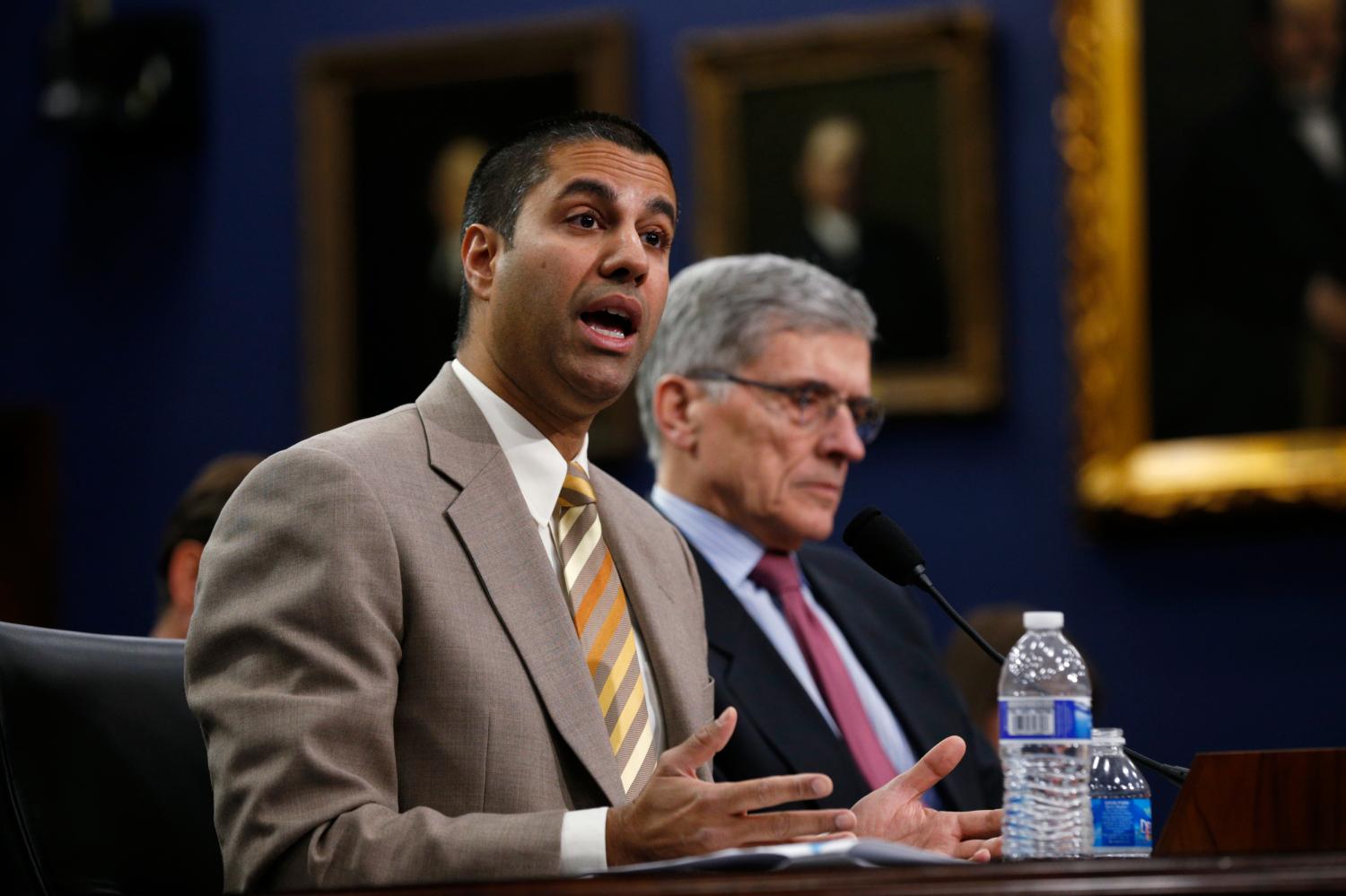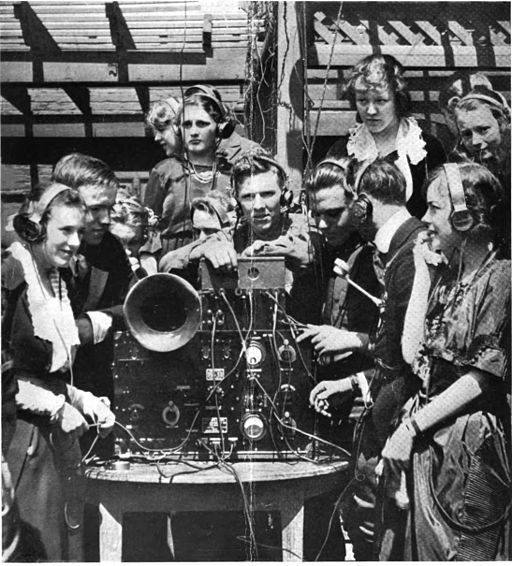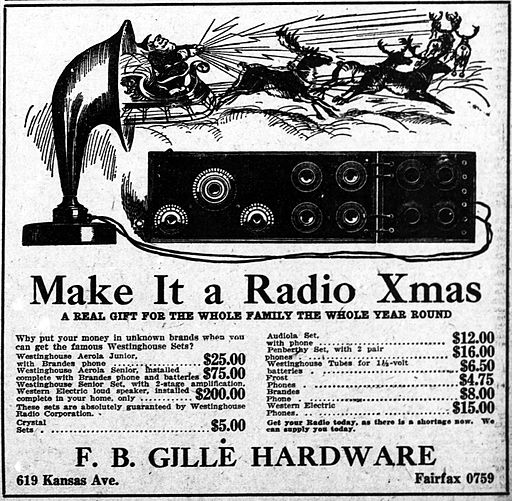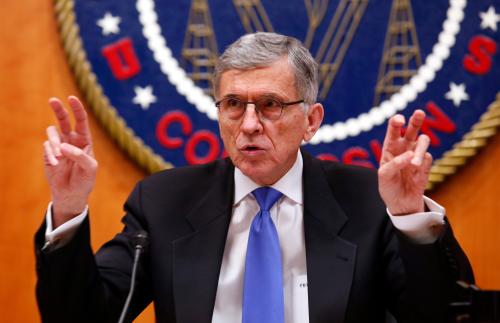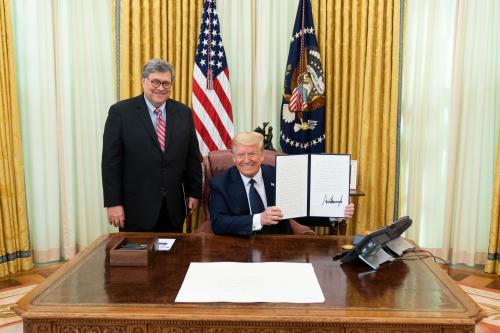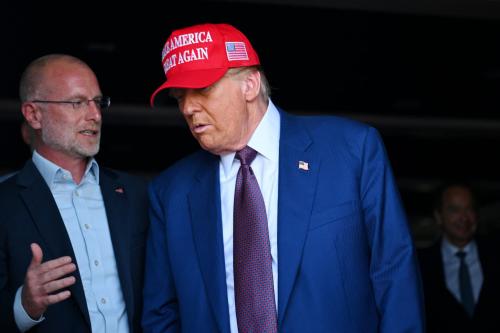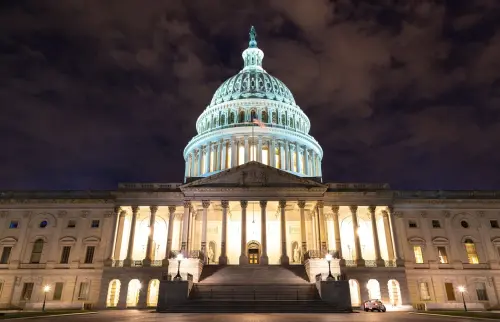Introduction
In a January interview with the trade publication Variety less than a week before he stepped down, former Federal Communications Commission Chairman Tom Wheeler commented:
“My ‘aha’ moment was that the public interest was a pretty malleable concept. The public interest is determined by the old adage, ‘Where you stand depends on where you sit.’ And so, what I have tried to do is say, ‘OK, we need another standard.’ And I kept saying to myself, ‘What is it that is in the common good, as differentiated from the public interest?’ Because the common good is how you can serve the good of the most people the best way.”
Wheeler’s remark underscored an existential question in communications law and regulation: what does the mandate to regulate broadcasting (i.e., over-the-air radio and television) consistent with the “public interest, convenience, and necessity” really mean?
The presence of this powerful legal, regulatory, and philosophical phrase in the Communications Act of 1934, as amended, is clear. Yet the legislative, judicial, and regulatory history of its interpretation as summarized below reflects decades of uncertainty and ambiguity by Congress, reviewing courts, and the FCC itself.
Legislative history
Under the 1912 Radio Act, it was illegal to transmit on radio without a license from the Department of Commerce, which actively policed broadcast stations to minimize interference. A successful 1926 challenge ended this regulatory scheme and interference problems escalated everywhere. A new allocation method had to be found.
Free speech advocates from religious, educational, and labor groups argued that a common carrier approach would be best by requiring broadcasters to allow anyone to buy airtime. The commercial broadcasters, represented by the National Association of Broadcasters (NAB), opposed common carrier status, seeking to retain editorial control over programming and to merge individual stations into national networks.
Congress adopted a compromise between the industry and the free speech advocates. With the Radio Act of 1927, and later the Communications Act of 1934 (which has been amended periodically and remains the charter for broadcast television today), two core principles were established. First, Congress prohibited common carriage for broadcasters and mandated a government-controlled, short-term licensing regime that assigned broadcasters to designated channels in the electromagnetic spectrum. Second, in order to justify this exclusionary zoning policy, Congress also required that broadcasters act as trustees of spectrum on behalf of all the others who were kept off the airwaves by the government. As guardians of a scarce and publicly owned resource, broadcasters were required to operate in the “public interest, convenience and necessity.”
As a rule, only government-sanctioned licensees would have free speech rights in broadcasting. In this sense, the scarcity of access to the airwaves is a creature of government licensure.
With a common carriage regime prohibition, Congress essentially stripped non-licensees of free speech rights in the broadcast medium except as authorized by “public interest” requirements. As a rule, only government-sanctioned licensees would have free speech rights in broadcasting. In this sense, the scarcity of access to the airwaves is a creature of government licensure. This exclusionary licensing arrangement was justified by requiring that broadcasters act as “public fiduciaries.”
Sections 9 and 11 of the 1927 Radio Act stated that “the licensing authority . . . [shall] determine that the public interest, convenience, or necessity would be served by the granting [of a broadcast license].”
The 1927 Radio Act—which created the Federal Radio Commission (FRC), the predecessor to the FCC, which was created by the 1934 Act—described the “public trustee” model as follows:
[Despite the fact that] the conscience and judgment of a station’s management are necessarily personal…the station itself must be operated as if owned by the public…It is as if people of a community should own a station and turn it over to the best man in sight with this injunction: “Manage this station in our interest…” The standing of every station is determined by that conception.
However, Congress failed to define what it meant by “public interest” in either the statutory text or the legislative history, leading one commentator to posit that the phrase meant “as little as any phrase that the drafters of the Act could have used and still comply with the constitutional requirement that there be some standard to guide the administrative wisdom of the licensing authority.”
Because Congress had delegated to the FRC the power to determine virtually all aspects of broadcasting, the FRC became the sole arbiter of what constituted the “public interest.”
Yet in its short seven-year existence, the FRC never issued a coherent definition of the public interest standard. Instead, it made case-by-case determinations of individual station practices that satisfied the standard.
The legislative history of the 1927 Act also offers no explanation of the origins of the broadcast public interest standard. One explanation of this absence is that when the drafters of the Radio Act reached an impasse in their attempt to define a standard for the FCC, a young lawyer on loan to the Senate from the Interstate Commerce Commission suggested the words “public interest, convenience and necessity” (the standard used in the Interstate Commerce Act that created the Interstate Commerce Commission). The drafters agreed.
The Communications Act of 1934 incorporated virtually all of the 1927 Act’s regulatory structure as it pertained to broadcasting. The “public interest, convenience, and necessity” phrase once again received no particular definition. Instead, the 1934 Act delegated implicit authority to the FCC to interpret these obligations. This led some courts and commentators to argue that a clearer definition was necessary for the government’s licensing powers to be constitutional.
For example, Judge Henry Friendly of the United States Court of Appeals for the Second Circuit argued that it would be better if Congress had defined the term better, saying an “arbitrary set of criteria” is used to suit the case of the moment.
Max Paglin, who served as the FCC’s General Counsel, noted that:
“[I]n the FCC’s first decade, devising a workable, standard definition of public interest programming was not a priority. To the contrary, although its predecessor had reviewed station programming for public interest content in license renewal proceedings, the FCC discontinued that practice, instead approving license renewal applications in groups, essentially rubberstamping the recommendations of the FCC’s engineering, legal, and accounting departments, which performed a content-neutral review of station performance.”
Nevertheless, the FCC consistently has rejected calls to adopt concrete standards for defining the public interest.
To give substance to the public interest standard, Congress has from time to time enacted its own requirements regarding what constitutes the public interest in broadcasting. But Congress also gave the FCC broad discretion in the Communications Act to formulate and revise the meaning of broadcasters’ public interest obligations as circumstances changed.
The FCC consistently has rejected calls to adopt concrete standards for defining the public interest.
Despite the philosophical complications and political tensions that this arrangement entails, the U.S. Supreme Court has repeatedly upheld the public trustee basis of broadcast regulation as constitutional.
Although the FCC has relative freedom to regulate under the broadcast public interest standard, it is restricted from censorship or interfering with free speech under the First Amendment of the United States Constitution.
In short, as Erwin G. Krasnow and Jack Goodman have noted, “[p]erhaps no single area of communications policy has generated as much scholarly discourse, judicial analysis, and political debate over the course of the last seventy years as has that simple directive to regulate in the ‘public interest.’”
Judicial history
Beginning with the 1927 Radio Act and continuing with the 1934 Communications Act, a number of key judicial decisions have addressed the implementation of the broadcast public interest standard, first by the FRC and later by the FCC. Below is a summary of these court rulings.
KFKB Broadcasting Ass’n v. Federal Radio Commission, 47 F.2d 670 (D.C. Cir. 1931)
This is the first significant federal court case to address the meaning of regulating in the “public interest.” There, the U.S. Court of Appeals for the District of Columbia Circuit held that the FRC’s refusal to renew a license based on the content of that station’s past programming did not constitute censorship in violation of Section 29 of the Radio Act of 1927.
In making its decision, the court granted great deference to the FRC’s administrative ruling, reasoning that because of the limited availability of broadcasting frequencies, the FRC was entitled to consider the “character and quality of the service being rendered.” By giving the FRC the power to regulate in the public interest, according to the court, Congress intended that stations “should not be a mere adjunct of a particular business but should be of a public character.”
Trinity Methodist Church v. Federal Radio Commission, 62 F.2d 850 (D.C. Cir. 1932)
Here, the FRC again relied on the publicintereststandard of the 1927 Act to deny a license renewal to a radio station on the basis of the content of its programming.
The same court affirmed the FRC’s finding that radio station KGEF’s broadcasts were not in the public interest because they “obstructed the administration of justice, offended the religious susceptibilities of thousands, inspired political distrust and civic discord . . . and offended youth and innocence by the free use of words suggestive of sexual immorality.”
Federal Radio Commission v. Nelson Bros. Bond & Mortgage Co., 289 U.S. 266 (1933)
The U.S. Supreme Court held that the public interest standard’s lack of definition does not grant the Federal Radio Commission unlimited power. Rather, the Commission was limited to consider the advantages enjoyed by the people of the state and their reasonable demands and the services rendered by respective stations, among other factors.
Federal Communications Commission v. Pottsville Broadcasting, 309 U.S. 134 (1940)
The U.S. Supreme Court in this case upheld the public interest standard, calling it the “touchstone” of authority of the FCC and holding that the Commission’s responsibility at all times was to measure applications via this standard. According to this opinion, the public interest standard is “as concrete as the complicated factors for judgment in such a field of delegated authority permit” and the approach is “a supple instrument for the exercise of discretion.”
Federal Communications Commission v. Sanders Bros. Radio Station, 309 U.S. 470 (1940)
Here, the U.S. Supreme Court held that the public interest standard did not require the FCC to consider economic injury to existing broadcast stations when considering an application for a new station. But unlike the Pottsville Broadcasting case, the Court offered a narrower interpretation of the public interest standard, suggesting the FCC had no supervisory control over programs, business matters, or station policies. (“In short, the broadcasting field is open to anyone, provided there be an available frequency over which he can broadcast without interference to others, if he shows his competency, the adequacy of his equipment, and financial ability to make good use of the assigned channel.”)
National Broadcasting Co. v. United States, 319 U.S. 190 (1943)
The U.S. Supreme Court found the analogy between broadcast media and print appropriate, and focused particularly on the nature of the medium. As the broadcast spectrum was not free to all, but rather was held for the public trust, there existed a parallel duty to maintain a broadcast media in the “public interest.” Consequently, the Court held that the 1934 Communications Act confers broad power upon the FCC to regulate broadcasters in the public interest. It defined the public interest as the interest of the listening public in “the larger and more effective use of radio.” Radio frequencies, unlike other modes of communication, are limited and therefore not available to all; this is what subjects it to government regulation. The Court also rejected the argument that the public interest standard is sufficiently vague to represent an unconstitutional delegation of power.
WOKO, Inc. v. Federal Communications Commission, 329 U.S. 223 (1946)
The U.S. Supreme Court, in finding no abuse of discretion by the FCC, held that it was up to the Commission, rather than the courts, to be satisfied that the granting of a broadcast license renewal would be in the public interest, thereby reversing the holding of the U.S. Court of Appeals for the D.C. Circuit.
Federal Communications Commission v. RCA Communications, Inc., 346 U.S. 86 (1953)
The U.S. Supreme Court held that competition alone does not necessarily further the public convenience, interest, or necessity. Competition may be considered as a factor in public interest policymaking as long as competition or its absence is not the single overriding principle directing the FCC’s activity.
McClatchy Broadcasting v. Federal Communications Commission, 239 F.2d 15 (D.C. Cir. 1956)
The federal appellate court in the D.C. Circuit held that the public interest standard does not lend itself to a “precise or comprehensive definition.” However, the only restrictions the court would place on the Commission were that it must act neither arbitrarily nor capriciously and that it must act within statutory and constitutional bounds. This holding has been criticized as obvious and not particularly illuminating.
Red Lion Broadcasting Co. v. Federal Communications Commission, 396 U.S. 367 (1970)
The U.S. Supreme Court, for the first time focusing on the First Amendment rights of broadcasters, unanimously upheld the constitutionality of the “Fairness Doctrine,” which required broadcasters to present both sides of controversial issues that were the subject of their broadcasts.
Unlike in print media, radio and television broadcasting spectrum limits the number of voices that can be heard at any given time and therefore gives government the ability to set content requirements in order to maximize the public benefits derived from broadcasting. Therefore, the Court held the Commission could regulate licenses to assure stations served the public interest.
Columbia Broadcasting System, Inc. v. Democratic Nat. Committee, 412 U.S. 94 (1973)
The U.S. Supreme Court found that determining the best interest of the public is difficult and that deference must be given to Congress and the experience of the FCC, while remaining sensitive to First Amendment interests. It held that “Congress intended to permit private broadcasting to develop with the widest journalistic freedom consistent with its public obligations. Only when the interests of the public are found to outweigh the private journalistic interests of the broadcasters will government power be asserted within the framework of the [1934] Act. License renewal proceedings, in which the listening public can be heard, are a principal means of such regulation.”
Regulatory history
“Successive regimes at the FCC have oscillated wildly between enthusiasm for the public interest standard and distaste for it.”
Internally, the FCC has been active in assessing the import of the statutory public interest standard for broadcasting. Former FCC Commissioner Ervin Dugan observed that “successive regimes at the FCC have oscillated wildly between enthusiasm for the public interest standard and distaste for it.” FCC Chairman Newton Minow, appointed by President Kennedy, has written that the words “public interest” are “at the heart of what Congress did in 1934, and they remain at the heart of our tomorrows.” “Whatever the temptations to abandon this notion—and they are many—the stakes are too high,” Minow wrote. “Without commitment to the public interest, all government action vis-à-vis communications would be without meaning.”
The FCC has said that “our general mandate…calls for consideration of other factors and a balancing of all relevant factors by this Commission in assessing the public interest.” It has further clarified that the statutory duty to broadcast in the “public interest” imposed on licensees the obligation to be sensitive to problems of public concern in the community and to make sufficient time available for a full discussion of such problems in a non-discriminatory basis.
The FCC also has interpreted the Communication Act’s public interest guideline as requiring diversity of ownership to maximize diversity of viewpoints.
The Commission has stated that Congress deliberately placed the public interest standard in the Communications Act to provide the Commission with maximum flexibility in dealing with the ever-changing conditions of the field of broadcasting:
The Commission was not created solely to provide certainty. Rather, Congress established a mandate for the Commission to act in the public interest. We conceive of that interest to require us to regulate where necessary, to deregulate where warranted, and above all, to assure the maximum service to the public at the lowest cost and with the least amount of regulation and paperwork.
Taken together, both the courts and the FCC have noted that the words “public interest” imply a balancing of all relevant factors that the agency is to consider. Courts review the Commission’s decisions to determine whether the FCC has fairly exercised its discretion within the vague bounds expressed by the public interest standard. In reviewing public interest determinations, according to Robert L. Pacholski, writing in a 1983 article published in the Texas Law Review (62 Tex. L. Rev. 319), appellate courts are faced with a three-part inquiry:
1) Is a particular factor under consideration by the FCC legally relevant?
“An agency’s determination that a certain factor is a relevant consideration in the public interest balancing test is, in essence, an interpretation of the agency’s enabling act with regard to the scope of the agency’s authority. Although courts have shown some deference to an agency’s interpretation of its own statute, the standard of review of this question of law should be stricter than that used to review questions of fact or the agency’s reasoning process.”
2) How should questions of fact be resolved?
“For example, once the FCC determines that the efficiency of a communications service is a relevant factor, it must next determine whether the proposed service for which a license is sought is truly more efficient than existing ones.”
3) How should the FCC’s decision-making process, or the actual balancing of proper considerations, be reviewed?
“This is essentially a review of the agency’s reasoning process. Courts normally apply an ‘arbitrary and capricious’ standard at this stage, overturning only agency determinations that amount to abuses of discretion.”
The Communications Act of 1934, as amended, also provides more specific guidelines for close cases. For example, if more than one applicant requests the same broadcast channel, then the FCC must determine which applicant will best serve the public interest. And if the applicants are equally qualified, the Commission must select randomly among them in order to award the license.
Overall, with regard to broadcast license renewals, applications historically have been granted with few exceptions. In recent years, with the implementation of the postcard renewal application, the FCC has truncated its evaluation by requesting a minimal amount of information regarding a broadcast licensee’s satisfaction of license renewal criteria under the public interest standard.
The FCC lacks power to remove the basic statutory framework of the public interest standard; however, the more autonomy the Commission grants to its licensees, the more its interpretation of the public trusteeship model has come to resemble primarily a marketplace approach. Although some commentators have argued that the FCC is abandoning the statutory public interest approach in favor of the marketplace, the FCC disagrees by arguing that the public interest can be met through reliance on market forces.
Because the 1934 Act embraced a public trusteeship model instead of a pure marketplace one, courts have maintained limits on the extent that the FCC can utilize market mechanisms as a spectrum allocation alternative. If the Commission were to go so far as to remove all restrictions on a licensee’s use of spectrum, the regulation of spectrum in the public interest would begin to resemble a granting of statutorily prohibited property interests. The FCC has not moved beyond these judicial limits to date. None of its recent deregulatory initiatives have granted broadcast licensees the autonomy to change the principal use of Commission-allocated spectrum from broadcasting to some other type of telecommunications service that may be justified by market forces rather than by a more generalized public interest standard.
Critiques of the public interest standard
Three critiques of the public interest standard are worthy of timely review by the 115th Congress if it moves ahead with undertaking significant amendments to the Communications Act of 1934:
Efficiency of the public interest standard needs to be improved
Former National Telecommunications and Information Administration Administrator Henry Geller suggests an alternative system that he believes will work more successfully:
“The basic goal of the FCC is to improve the quality and educational aspects of broadcast programs. That goal, however, is not being achieved. The self-interest of the broadcaster and the whole economic structure of the commercial broadcasting industry work against the notion of the broadcaster as public fiduciary. For example, children watch a great deal of television, over thirty hours a week. One would expect that the role of a public trustee would include broadcasting programs with educational content, such as ‘Sesame Street.’ The broadcasting industry has the money and the resources to do it, but it does not.”
Geller favors eliminating the current system of a public interest standard applied to broadcasting. He would replace it with a system that collects a percentage of gross revenues of a broadcast station under a long-term contract and use that money to accomplish the public interest goals of informational children’s programming. The benefit of this plan “would provide a more direct solution to the problem of finding quality, noncommercial programming.”
There is a lack of durable regulatory and judicial precedents
Peter Huber, a senior fellow at The Manhattan Institute, contends that the FCC and the courts have failed to build up a body of precedent that would imbue the public interest standard with any concrete, durable meaning:
“The ‘public interest’ is, to put it mildly, an amorphous standard that allows the Commission to consider virtually anything. As the Supreme Court has said, the ‘standard no doubt leaves wide discretion and calls for imaginative interpretation.’ It is ‘not a standard that lends itself to application with exactitude.’ … Congress is similarly hindered in trying to evaluate the agency’s policy when it is implemented in this fashion; thus Congress cannot exercise effective oversight.”
The public interest standard is not specific enough
In contrast, Randolph May, president of The Free State Foundation, argues that Congress should revise the Communications Act to set forth more specific guidance for the FCC. In today’s environment of digital convergence in which competition is flourishing across communications sectors, May asserts that Congress should not wait to be compelled by the courts to replace the public interest standard with more specific guidance to the FCC. May hopes this guidance will provide an unmistakable roadmap toward a deregulatory system consistent with a competitive marketplace:
“Strictly speaking, the public interest standard may have been no less constitutionally suspect at the time of its inclusion in the original 1934 Act than today…The standard sure turned out to be the ‘supple instrument’ in the hands of the agency that [Justice] Frankfurter envisioned.
“Now, though, Congress must ask itself anew whether the public interest standard is sufficiently ‘concrete’ to fulfill Congress’s responsibility to set communications policies for the Information Age, or whether it is so vague that it can mean whatever three FCC Commissioners say it means on any given day.”
The Telecommunications Act of 1996 and the public interest standard
President Clinton established the Advisory Committee on the Public Interest Obligations of Digital Television Broadcasters in March 1997.
The goal of the Committee was to determine how the principles of public trusteeship that had governed broadcast television should be applied in the wake of the Telecommunications Act of 1996, which amended but did not replace the Communications Act of 1934. Specifically, the President requested that the Advisory Committee advise on the public interest obligations of digital television broadcasters, which would replace analog broadcasting techniques as the new transmission technology.
The recommendations of the Advisory Committee represent one of the most sustained and thorough inquiries into the public interest obligations of television broadcasters ever conducted. For example:
- Digital broadcasters should be required to make enhanced disclosures of their public interest programming and activities on a quarterly basis, using standardized check-off forms that reduce administrative burdens and can be easily understood by the public.
- The National Association of Broadcasters, acting as the representative of the broadcasting industry, should draft an updated voluntary Code of Conduct to highlight and reinforce the public interest commitments of broadcasters.
- The FCC should adopt a set of minimum public interest requirements for digital television broadcasters.
- Congress should create a trust fund to ensure enhanced and permanent funding for public broadcasting to help it fulfill its potential in the digital television environment and remove it from the vicissitudes of the political process.
- The television broadcast industry should voluntarily provide five minutes each night for candidate-centered discourse in the 30 days before an election. Blanket bans on the sale of airtime to all state and local political candidates also should be examined.
- Broadcasters should work with appropriate emergency communications specialists and manufacturers to determine the most effective means to transmit disaster warning information. The means chosen should be minimally intrusive on bandwidth and not result in undue additional burdens or costs on broadcasters.
- Diversity is an important value in broadcasting, whether it is in programming, political discourse, hiring, promotion, or business opportunities within the industry. The Advisory Committee recommended that broadcasters seize the opportunities inherent in digital television technology to substantially enhance the diversity available in the television marketplace.
Despite these recommendations and the numerous changes that the 1996 Act introduced, the FCC’s vague mandate to act in the “public interest” remained. The 1996 Act clarified that the standard is applicable to television in the digital era, however, which only maintained the legislative status quo. It does not provide any guidance for or limitations on the kinds of rules and regulations the FCC can adopt in articulating its presumptive understanding of the public interest or its regulatory role. In the intervening years, this absence of statutory definition remains, and only Congress can remedy this continuing lack of legislative boundaries that it has provided to the FCC.
Only Congress can remedy this continuing lack of legislative boundaries that it has provided to the FCC.
Conclusion
The FCC’s mandate to regulate broadcasting consistent with the “public interest, convenience, and necessity” remains a pillar of communications law and regulation. Its legacy from the early part of the 20th century endures, yet its precise meaning remains opaque and elusive. The 115th Congress can address this problem more directly as it considers whether to enact substantial modifications to the current Communications Act, especially since it failed to do so when passing the Telecommunications Act of 1996.
The decades-long lack of clarity calls for more focused legislative attention to what decisional guidance should be delegated to the FCC. Absent any Congressional action, the FCC can and should articulate a set of public interest principles that can be applied to broadcasting with greater transparency and consistency.
The author thanks Scott Sherman, Harvard Law School Class of 2017, for his research assistance. The views expressed herein are solely those of the author.
The Brookings Institution is committed to quality, independence, and impact.
We are supported by a diverse array of funders. In line with our values and policies, each Brookings publication represents the sole views of its author(s).

